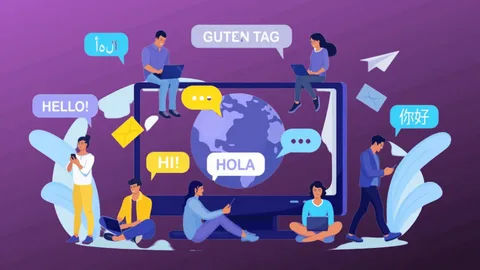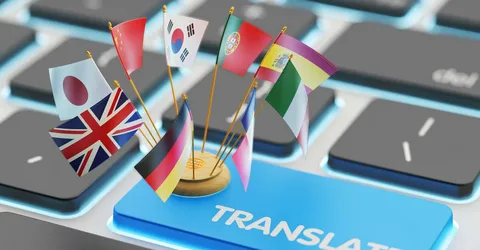Introduction
In a world where communication is essential for understanding and unity, the power of language cannot be ignored. Käöntöjä, in particular, has evolved as a bridge that connects many cultures while also honoring differences. Beyond words, Kaontoja reflects on breaking down boundaries and developing communication paths in which differences are accepted and cherished.
Kaontoja fosters global connections by translating words, thoughts, feelings, and goals. It promotes the belief that our diversity is our strength and that our readiness to understand one another is the key to building a united and thriving global community. Through its practice, we are reminded of our common humanity and the limitless potential that arises when cultures intersect, connect, and collaborate.
Understanding Käöntöjä: More than just translation.
Käöntöjä marks a significant voyage into the domain of linguistic artistry, going beyond the simple process of translating words from one language to another. It’s a subtle type of communication that combines the rich tapestry of cultural context, emotional resonance, and the many meanings hidden beneath the surface of language. Individuals practicing Kaontoja embark on a deeper journey into the center of communication, revealing layers of understanding that traditional translation approaches frequently overlook.
What Does “Käöntöjä” Mean?
Käöntöjä is a Finnish word that means “translation” or “translator.” For Finns, this word signifies a fundamental cultural concept. Finland has two official languages, Finnish and Swedish. As a result, translation between these languages has always been important.
Preserving Culture
Käöntöjä is also important for cultural preservation in Finland despite its tiny size. Käöntäjät contributes to the global recognition of Finland’s distinct voice by translating masterpieces of literature, music, and cinema into other languages. At the same time, käöntöjä introduces outside cultural elements into Finland and adapts them to the local environment. Through this exchange, the Finnish language and identity are kept vibrant.
Käöntöjä has long been a symbol of Finnish unity and identity. This word reflects an idea at the heart of Finnish culture, whether connecting with people within the country or spreading Finland’s voice overseas. Käöntöjä bridges language and cultural boundaries, weaving a thread that links Finland together.
Linguistic Origins of Käöntöjä
The word “käöntöjä” comes from the Finnish verb “kääntää,” which means “to turn” or “to translate.” This verb has several levels of meaning, reflecting the varied nature of käöntöjä. The act of twisting something might refer to a physical, symbolic, or intellectual transformation, making käöntöjä a diverse and rich notion.
Cultural Significance of Käöntöjä
Käöntöjä and Finnish Literature
Käöntöjä is an important concept in Finnish literature. Translators are frequently viewed as cultural intermediaries bridging the gap between languages and cultures. They do more than translate words; they convey the original text’s substance, tone, and cultural context. This process of käöntöjä ensures that the translated work resonates with the new audience while maintaining its original ethos.
Definition of “käöntöjä”
The Finnish term “käöntöjä” refers to the practice of translating literature from one language to another while preserving its meaning and context. Translating from one language to another is only part of the challenge; accurate communication requires considering cultural subtleties.
Semantic and Social Difficulties in Translation
Interpretation is far from a straightforward connection. Language specialists and interpreters encounter a variety of challenges, including:
Sayings and metaphors: These expressions frequently lack direct reciprocals in other languages, necessitating creative solutions to convey the same meaning.
Social References: Neighbourhood customs, traditions, and authentic environments should be perceived and appropriately designed to maintain significance.
Specialized Terminology: Specific areas like medicine, regulation, and design have a remarkable vocabulary that requires precise interpretation to avoid misconceptions.
The importance of accurate translations: Käöntöjä
In today’s globalized world, correct translations are necessary for several reasons:
Enhancing Communication
Accurate translations increase communication between individuals and organizations with diverse linguistic origins. This is especially critical in international commerce, where clear and concise communication can make or break a deal. Companies rely on skilled translation services to translate marketing materials and products.Understanding Käöntöjä’s Impact.
Understanding Käöntöjä’s Impact.
Translation has far-reaching consequences beyond language; it is a cultural bridge that brings people together worldwide. By using complex phrases and meanings, translation promotes understanding and deep connections between people.
Translation fosters discussion and empathy in diverse groups by breaking down linguistic and cultural barriers. It enables people to authentically share their experiences and thoughts, resulting in true interactions.
Translation is extremely important in business since it allows for cross-border communication and collaboration. It enables companies to enter new markets and form international alliances, promoting global growth and innovation.
In education, translation facilitates fresh learning experiences by linking students with materials and perspectives from worldwide. It promotes multicultural understanding and raises global knowledge among students.

Culturally, translation improves artistic expression and innovation by allowing artists to reach audiences beyond linguistic boundaries. It preserves cultural legacy while incorporating current elements, promoting cultural interchange and appreciation.
Translation uses media and technology to amplify voices and stories, creating a platform for various perspectives to be heard and understood globally. It enables individuals to share their opinions and experiences, creating a more inclusive and interconnected world.
To summarise, translation has a transformative impact—it crosses cultures, promotes collaboration, and enriches human ties. Its influence permeates all sectors of life, resulting in a more integrated and inclusive world community.
The Function of Language in Käöntöjä
Language is at the heart of Käöntöjä, throbbing with cultural significance and promoting community among its inhabitants. It is a key bridge, bringing disparate populations together and fostering mutual understanding.
At its core, language in Käöntöjä serves as a powerful tool for communication, allowing people to express their thoughts, emotions, and ideas with clarity and effectiveness. It breaks down linguistic boundaries, allowing people from diverse backgrounds to participate and connect deeply.
Language in Käöntöjä is also important for preserving cultural history and identity. Käöntöjä’s cultural fabric is rich and diverse, encapsulated by the transmission of words, stories, and traditions from generation to generation.
Furthermore, language allows individuals in the Käöntöjä community to communicate their experiences and thoughts, establishing a sense of belonging and solidarity. It fosters a collaborative environment where ideas can grow and shared goals can be realized.
Language in Käöntöjä has expanded its influence in the digital age via many platforms and channels, acting as a conduit for information transmission, creativity, and innovation.
The Role of Language
Käöntöjä is multifunctional, acting as a tool for communication, a receptacle for culture, a catalyst for unity, and a beacon of innovation. Its significance permeates all aspects of Käöntöjä, therefore,
resulting in a dynamic and integrated community.
Conclusion
Translation is a key bridge between cultures, supporting effective communication and developing mutual understanding in our increasingly interconnected world.
From ancient civilizations to the present era of digitalization, translation has played an important role in influencing human connections and driving advancement in various fields. Moreover, Looking ahead, technological improvements can improve and expand access to translation services. However, it is critical to recognize the invaluable contribution of human expertise and sensitivity in generating accurate and culturally relevant translations. By embracing the harmonic partnership of technology and human insight, we can navigate the many nuances of language and culture, creating stronger connections and nurturing a more inclusive and integrated global community.
